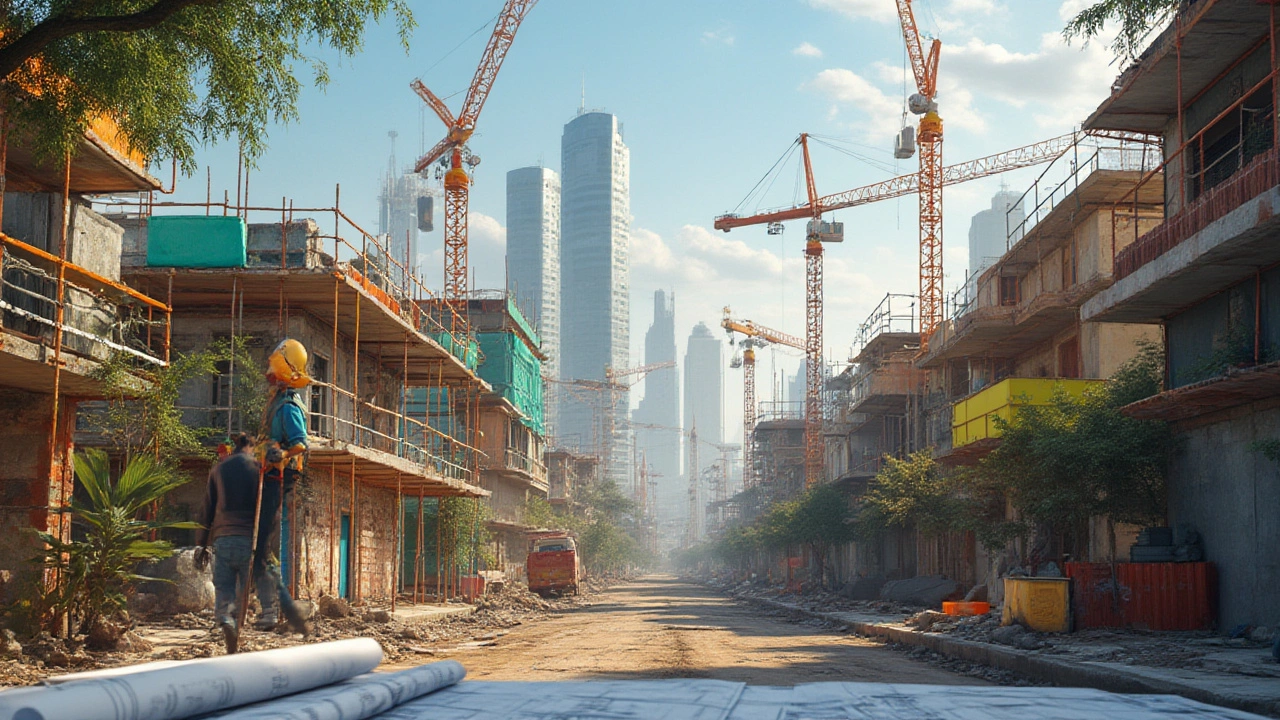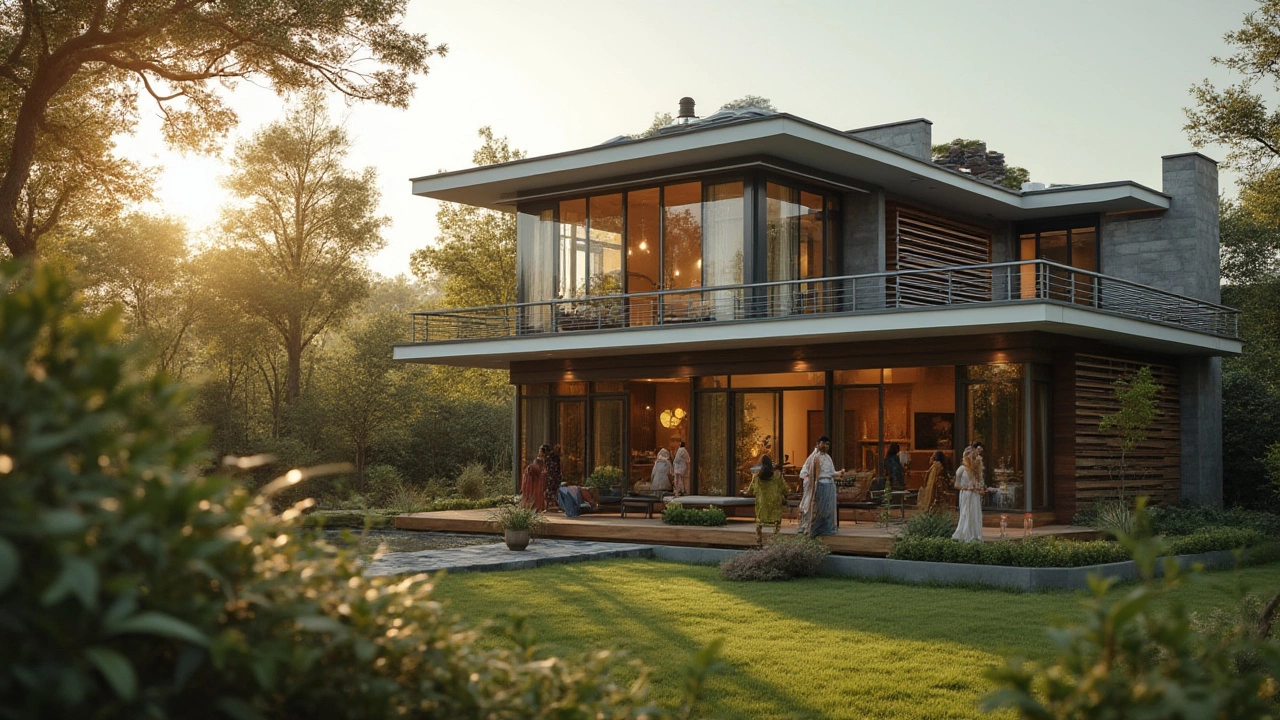What Does 'New Build' Mean? Your Guide to Brand New Homes and Developments

You’ve seen shiny new houses popping up on roadsides, heard estate agents dropping the term ‘new build’ like it’s a golden ticket, maybe even caught your grandparents grumbling about them “not being built like they used to.” But what does ‘new build’ actually mean? Believe it or not, that simple phrase packs in a load of details, industry quirks, and, yes, a few hidden headaches—and advantages. Whether you’re eyeing a move or just nosy about that crisp row of homes at the end of your street, digging into the nuts and bolts of ‘new build’ pays off more than you might expect.
What Counts as a New Build?
The literal meaning seems obvious—brand new construction, never lived in, everything fresh from the foundation to the paint. But if you talk to folks in the industry, ‘new build’ has a very specific definition. In UK property law, a new build is a property that’s never been sold or occupied before the current sale. That means, yes, even if a house was built five years ago but sat empty and unsold, it’s still officially a new build. The same idea holds in most places in the US and Australia, too. Developers love clear-cut labels. Anything built from scratch on previously undeveloped land, sometimes even on sites where the old building was completely torn down, counts as a new build. You’ll find semi-detached, detached, terraced, flats, apartments, even entire housing estates called new builds. The key is: new everything for its first ever owner or tenant.
For companies, the appeal is massive. New builds often attract premium prices, as buyers want trouble-free living (or dream of it). According to the U.S. Census Bureau, roughly 14% of home sales in 2023 were for new, never-occupied properties. In the UK, new build completions hit nearly 245,000 in 2024, the highest figure in decades. That’s a lot of bricks and a lot of fresh front doors swinging open! But here’s an interesting tidbit: in some cities, new builds make up entire neighborhoods, like London’s Battersea Power Station redevelopment or Sydney’s Barangaroo precinct. These aren’t just single houses—they’re reshaping skylines and city layouts.
It’s also worth knowing that new build doesn’t always mean brand-spanking-new. Sometimes, you’ll see the term used (a bit cheekily) for conversions—think old warehouses now split into loft apartments, or period office blocks turned into homes. But purists will argue that ‘converted’ isn’t quite the same as ‘new build,’ since the structural shell may be decades old. When in doubt, ask the agent or developer: was this actually built from nothing, or was it something else before?
If you want perks, new builds come loaded. From 10-year building warranties (like NHBC in the UK or Builder’s Warranty in Australia) to modern layouts, better insulation, and strict standards for electrics, safety, and accessibility, new builds can feel light-years ahead of the average 1930s semi. But the big draw for buyers is the chance to be the first owner—no mysterious stains on the carpet, no creaky pipes to spook you, no avocado toilets to replace. Just that new home smell and a layout designed for how people actually live today, with open-plan kitchens, bigger windows, plug sockets (so many plug sockets!), and enough charging ports to power a small tech army.
Why New Builds Matter in Real Estate and Construction
Let’s talk numbers, trends, and the meaty stuff behind all those Instagrammable show-homes. New builds are a big deal for governments, property companies, and buyers alike. There’s a lot riding on them—literally, in the case of entire suburbs appearing almost overnight. In growing countries, new builds help meet huge demand. Take Canada, where Toronto and Vancouver are adding thousands of new build condos each year just to keep up with population growth. Without these projects, home prices would rocket even faster (and that’s saying something).
Governments love new build projects for a few reasons. They boost construction jobs and tax revenues. They help fight housing shortages. At the same time, new builds drive competition: they force older homes to keep up or risk becoming less attractive. Builders use new materials, smarter heating systems, sound insulation, and are increasingly pressured to deliver with a lower carbon footprint. For example, European Union rules since 2021 require new builds to be “nearly zero energy buildings,” leaning hard into solar panels, triple glazing, and insulation that keeps heat in without melting your wallet. Some experts consider new builds a key tool for fighting climate change, as these structures can use half the energy of a poorly insulated Victorian terrace.
Real estate agents treat new builds as premium stock. They know buyers who can afford the ‘new’ price tag often want a hassle-free move, fewer up-front repairs, and that elusive peace of mind. In hot property markets like London, New York, and Sydney, new builds are advertised with perks such as stamp duty discounts, help-to-buy schemes, or free upgrades to get buyers over the line.
Developers design new builds according to trends, so today’s new homes look a lot different from those built in the 80s or 90s. Smarter kitchens, flexible open spaces, workspace nooks (thanks, pandemic), and low-maintenance exteriors are all in. In 2024, over 80% of British new builds featured fiber broadband as a default, meaning no more wrestling with slow ADSL after you move in. Security is also a step up, with video doorbells and community CCTV popping up by default in many developments.
The role of new builds isn’t just economic, either. They can transform entire communities, adding schools, parks, bus routes, and even new shops. A well-planned new build estate can turn a field on the edge of town into a buzzing, self-contained village. But not everyone’s thrilled—NIMBY (Not In My BackYard) campaigns exist for a reason. Many locals fear overdevelopment, lost green space, or poorly designed ‘cookie cutter’ homes that look the same everywhere. If you’re shopping, pay close attention to the reputation of the builder and the individual development: some new build schemes are beautiful, others end up the butt of local jokes for their paper-thin walls or weird layouts.

What’s Different About Buying a New Build?
Now, if you’re seriously thinking of moving into a new build, there’s a whole playbook that’s just a bit different from buying a typical resale home. For one, you’re often not walking into a finished house—you’re buying off-plan. That means you sign the contract (and often pay a reservation fee) before the first brick is even laid. Relying on a brochure or a glitzy show home takes a bit of faith, so always check floor plans in detail and ask what’s included. Some developers charge extra for simple things: turf in the garden, better tiles, or even light fixtures. Make sure you know what ‘standard finish’ really means.
One clear benefit? You can sometimes pick your finishes—flooring, cabinets, bathroom tiles, wall colors—before the build gets completed. Your home, your choices. But be warned: these ‘upgrades’ can add thousands to the price, fast. Always set a firm budget. Another perk is the hands-off factor. No ugly wallpaper to strip, no random old junk left in the attic.
With new builds, legal checks are different too. Your solicitor (or conveyancer) will look at things like warranties, guarantees, and crucially, the planning permission for the whole development. Sometimes snagging issues are found during the handover process—minor dings to paintwork, doors not closing, a window that sticks. It’s normal, and developers expect to fix these ‘snags’ after you move in. But keep a sharp eye: recent stories in the UK press have highlighted buyers waiting months (sometimes years) for builders to sort out serious snags like leaking roofs or wonky floors. Get everything in writing.
Mortgages can be more complicated. Some lenders are wary about new builds, especially apartments, and require bigger deposits or extra insurance. They'll often send a valuer to check if the price matches the actual value, not just the developer’s asking price. Deals like Help to Buy in the UK or First Home Owner Grant in Australia are typically only available for new build homes, giving you financial help—if you meet the rules.
Be extra careful if you’re the first to move in. Sometimes developments stall, leaving you with half-built roads or no working streetlights until the final homes are finished. And check the residents’ association or management contract: some new builds come with hefty annual fees to maintain green space or communal areas. Not all these costs are obvious when you first see the price tag.
Tips and Hard Truths About New Builds
It’s easy to get caught up in the perfect vision of new home living—brilliant energy ratings, never-used bathrooms, streets full of young couples with matching pushchairs. And yes, new builds are often easier to heat, quieter, and less likely to trip your electrics every time you boil two kettles at once. But if you want the real picture, not just the glossy developer pitch, listen up.
First, never skip your independent snagging survey. Even the best builders make mistakes, and you want someone on your side spotting them before your warranty (or patience) runs out. Common issues? Misaligned doors, poorly fitted windows, missing insulation, or even the odd misplaced plug socket. Don't let the builder convince you these are ‘normal’—you’ve paid for new, so expect new.
Watch the site as it develops. Ask if parks, shops, or promised schools are actually going in—or just shown in shiny artist’s impressions. Sometimes, local councils and developers clash over these plans, leading to ghost playgrounds or half-finished paths. Surf local forums or Facebook groups for honest reviews of the builder and the estate itself.
If you want top resale value, check the wider market. You’re not alone—hundreds of homes built to the same plan could mean stiff competition when you sell. Go for a corner plot, south-facing garden, or anything else that gives your house a slight edge. Some buyers still prefer the ‘character’ of older homes, so don’t assume you’ll always make a tidy profit. Recent figures from Zoopla in 2025 show many new builds can drop in resale value short-term, especially if the area’s full of ongoing construction for years.
And finally, check the fine print. Some developers tie in buyers with covenants about parking, decorating, or what you can do in your garden. Others add surprise management charges. Ask your solicitor for a full breakdown—not just the stuff the glossy brochure tells you.
Despite these warnings, the draw of new build homes is real. The convenience, contemporary features, high efficiency, and hassle-free first few years are big selling points, especially for busy families or anyone craving a simple move. Just go in eyes wide open and read past the sales pitch. If you do, you really can get the best of brand new without the headaches of old house charm gone rogue.
Write a comment